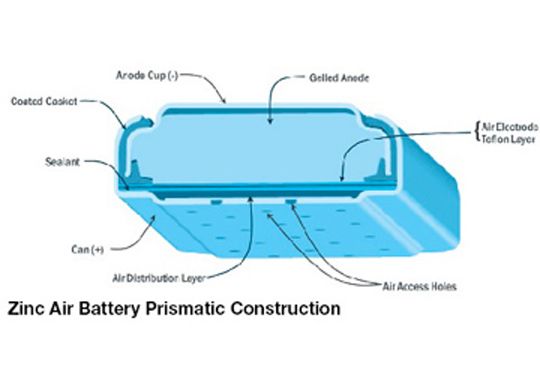Energizer plans to launch a new type of standard battery in the summer of 2010, based on technology invented some 35 years ago. The Energizer Zinc Air, a primary (non-rechargeable) battery solution, uses oxygen from the air as an energy source to generate power. The new batteries provide longer run time, come in a smaller form factor, and are expected to open up a much bigger market for the company.
While other types of primary battery contain two dissimilar materials (anode and cathode), zinc air batteries contain only one; the size of a standard battery of the same volume is therefore significantly reduced. The batteries have a thickness of only 5mm, as compared with the 8mm thickness of the smallest alkaline battery (AAAA), and are available in a new prismatic (rectangular) form factor (see Fig).
The zinc air battery is designed with air access holes that are sealed with a tab, which the consumer removes in order to start using the battery. A major disadvantage, however, is that when the active material is exposed to the environment, the battery's ability to deliver in the high current range begins to deteriorate. The typical run time of previous-generation zinc air batteries, therefore, was only about one to three months.
To read the rest of the story visit Tech-On!




